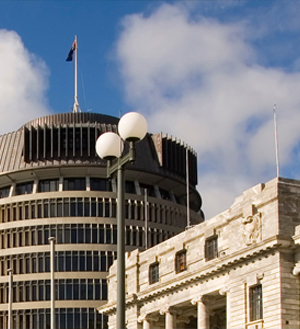On 1 October 2025, the Government released a package aimed at strengthening energy security while reaffirming its commitment to New Zealand’s market-based electricity system.
The package focuses on unlocking investment, improving transparency and regulatory capability, and ensuring long‑duration firming (the generation capacity and fuel to cover dry years and sustained low wind periods) to facilitate the build-out of renewables.
In releasing the package, Minister Willis said: “reliable and affordable energy is key to New Zealand’s prosperity” and that “energy powers every part of our economy, from households to high-value industries, and will increasingly determine our ability to compete in the global economy”.
What’s in the package?
The package contains two key workstreams.
Invest in energy security
- LNG: The Government will commence a process to explore options for an LNG import facility to support long-duration firming and energy security, with a Registration of Interest to test market appetite opening on 6 October 2025.
- Capital flexibility for Mixed Ownership Model (MOM) companies: The Government has addressed perceived constraints on the raising of new equity, with an expectation that the Government will take up its share of new funding if MOM companies bring forward commercially viable new generation.
- Government as anchor customer: A Request for Information was released on 1 October to enable the Government to better understand how its purchasing power could be utilised to support potential energy projects and the type of Governmental support that could address critical barriers facing such projects. An update will be provided on next steps in December 2025.
- Accelerated renewables: The target is to double renewable energy by 2050 through a combination of fast-track approvals, targeted Resource Management Act (RMA) changes, an updated national direction on RMA, streamlined connection processes, and offshore wind legislation in early 2026. For a recent update on the fast-track approvals regime, see: Fast-Track in action: decisions rolling in as process set for a tune-up - Bell Gully.
Build stronger markets
- Reduce sovereign risk: The package clearly signals the importance of certainty for investors. This is proposed to be achieved through the use of Government indemnities, co‑investment, and Public Private Partnerships and other tailored procurement approaches, with further decisions expected in the first quarter of 2026.
- Stronger Electricity Authority (EA): The EA will be the recipient of greater powers to regulate the market and enforce competition. This is to be achieved through higher penalties, potential criminalisation of certain business conduct, faster rule changes, enhanced monitoring, and better integration with Transpower’s security-of-supply role (legislation is expected to be introduced the second quarter of 2026).
- Market transparency and efficiency: There will be:
- expanded electricity market disclosure on thermal fuels, hedge market transparency and liquidity, and stronger stress testing of participants to support entry and competition; and
- a requirement for faster gas reserves and production reporting, an annual gas supply–demand study released by industry body GIC (the Gas Industry Company) and new information requirements from 2026 to improve planning across gas and electricity.
- expanded electricity market disclosure on thermal fuels, hedge market transparency and liquidity, and stronger stress testing of participants to support entry and competition; and
- Reliability and resilience framework: Dry-year risk is to be mitigated in part through further regulation to incentivise firming to support new renewables. The framework for this will be consulted on through the first quarter of 2026.
- Efficiency of electricity distribution businesses (EDBs): The Government has elected to not pursue mandatory consolidation of the 29 EDBs. However, with distribution charges accounting for roughly 25 per cent of residential electricity bills, and an estimated NZ$22 billion being needed over the next decade to prepare networks for rapid electrification, EDBs are to be asked to report on opportunities for standardisation and collaboration.
Why this matters
- There is a relatively short window for much of the consultation and feedback proposed as part of the package. Market participants will need to be well prepared in order to engage effectively.
- There is a clear recommitment to a market-based system. We welcome competitive, investment-led solutions to address New Zealand’s energy needs.
- The equity overhang has been addressed. The explicit support for MOM company capital raisings should ease any assumptions that new equity was unavailable, supporting near-term funding for new generation and firming.
- Recognition of the importance of stability. Practical tools are now proposed to provide greater investment certainty. We are pleased to see that the Government is prepared to play a role to give confidence to new projects.
- While endorsing the market-based system, there is recognition that a strong regulator is required. We are supportive of that approach but think it is important for any reforms to take a balanced approach to regulatory responsibilities, particularly in an environment where directors and senior managers already carry heavy regulatory compliance obligations.
- EDBs remain central to future electrification. Distributors will welcome the lifting of the generation thresholds to allow their involvement in up to 250 megawatts (MW) of network-connected generation (up from 50 MW) and the removal of the limit for grid-connected generation.
How Bell Gully can help
The energy package offers a number of opportunities for industry participation and feedback. We have significant experience in the components of the energy security and stronger markets pathways proposed, including long-term offtake and risk allocation structures, equity and hybrid capital raisings, consenting, grid/connection, renewables development and infrastructure procurement.
We will continue to monitor the package as it evolves.
If you have any questions about this article, please get in touch with the contacts listed or your usual Bell Gully adviser.
Disclaimer: This publication is necessarily brief and general in nature. You should seek professional advice before taking any action in relation to the matters dealt with in this publication.











